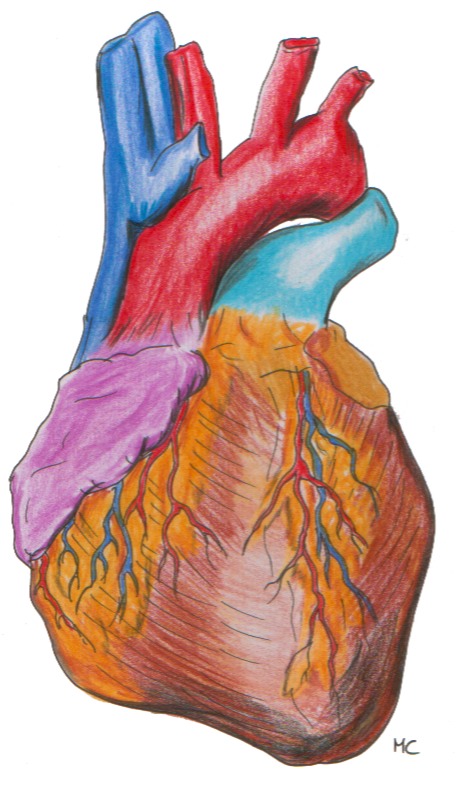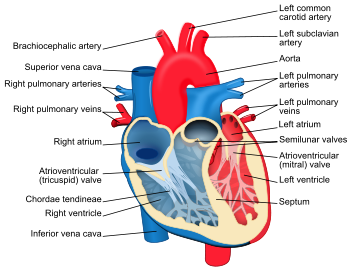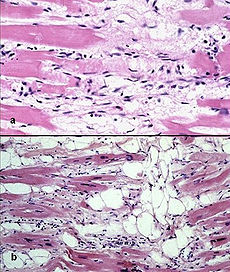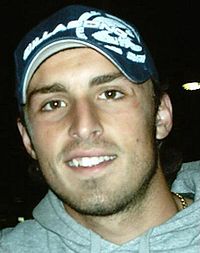“Once I had brains, and a heart also; so having tried them both, I should much rather have a heart.”
– The Tin Woodsman of Oz

Congenital heart defects, describing those present at birth, are the most common birth defects – affecting almost 1 percent of all babies born – and are the leading cause of birth defect-related deaths.Congenital heart defects include a variety of malformations of the heart or its major blood vessels that are present at birth. These defects may obstruct or cause blood to flow through the heart in an abnormal pattern (hypertrophic cardiomyopathy, ventricular Septal Defect, tetrology of fallot) or affect heart rhythm (long QT syndrome).
While the cause of most congenital heart defects is unknown, some heart malformations do have a clear genetic link such as from large chromosome aberrations such as 22q11.2 deletion syndrome, and single gene defects as seen in syndromes such as Noonan syndrome. In addition, a vast and diverse number of genetic syndromes also present with heart defects as one of the symptoms.
NOONAN SYNDROME
1 in 1,000-2,500
Autosomal dominant

Noonan syndrome is one of the most common conditions associated with congenital heart anomalies. Resulting from mutations in a gene encoding a protein important in regulating cell growth and formation of the heart valves, individuals have heart defects, short stature, learning problems, indentation of the chest, impaired blood clotting, and characteristic facial features.
It has been suggested that the blacksmith in the famous painting “Among Those Left” by Ivan Le Lorraine Albright had Noonan syndrome, judging from the contour of the breastbone, the low-set ears, and the short height.
TETRALOGY OF FALLOT
1 in 2,000


Tetralogy of Fallot is a complex of anatomic abnormalities arising from the maldevelopment of the right side of the heart leading to low oxygenation of blood due to the mixing of oxygenated and deoxygenated blood in the venticles. This is the most common cause of “blue baby syndrome”. Often associated with 22q11.2 deletion syndrome this can also occur through a number of single gene mutations, though environmental factors can also play a role.
The Dutch painter Dick Ket was believed to have had this with numerous self portraits showing another characteristic, often seen in this disease, which is a progressive enlargement of the fingers, known as clubbing, due to reduced levels of oxygen reaching these parts of the body.
The well-known snowboarder Shaun White was born this, for which he underwent two open-heart operations when he was one year old.
The Australian test cricketer, Beau Casson, also underwent three-open heart surgeries at a young age due to this condition.
22Q11.2 DELETION SYNDROME
1 in 1,800 births
22q11.2 deletion syndrome is a disorder caused by the deletion of around 3 million base pairs of DNA near the middle of chromosome 22 – a region containing about 30 genes. This results in symptoms including heart defects and an opening in the roof of the mouth known as a cleft palate. With an incidence of around 1 in, the features of this syndrome are so varied that it has been given a number of different names such as DiGeorge syndrome and Shprintzen syndrome by researchers who were convinced that they had discovered a new syndrome. However, once it became clear that these symptoms were all determined by the same chromosome 22 deletion, they were grouped into a single syndrome. It then became known for a while as CATCH22 (for cardiac abnormality, T-cell deficit, clefting and hypocalcaemia, chromosome 22). Although a clever title, it has negative overtones and so fell out of favour. It now known more prosaically as the 22q11.2 deletion syndrome.
LONG QT SYNDROME
The QT interval is the length of time it takes the electrical system to recharge following a heartbeat.
A percentage of infants dying of cot death in the first week of life, show a prolongation of the QT interval. In some cases there are underlying genetic mechanisms and large number of different inherited long QT syndromes have been identified resulting from different mutant genes. For example, one mutant gene for a potassium channel (potassium ions are necessary for function of the electrical conduction system of the heart) is suspected to underlie around a third of all genetic cases. This defect can also lead to a vulnerability to suddenly developing a very fast, abnormal heart rhythm in adulthood. In such an instance no blood is pumped out of the heart causing sudden death.

HYPERTROPHIC CARDIOMYOPATHY
1:1500
Autosomal dominant
This is the leading cause of sudden death in people under the age of 30.
This inherited heart condition results in the accumulation of an abnormal protein inside heart muscle cells causing the muscles, especially in the left ventricle and septum, to thicken leading to and the heart developing an irregular beat. There are at least 9 genes identified that when mutated can cause the disorder; these code for filament proteins found in muscle cells of the heart. Most cases of HCM go undetected, it is estimated that about 1% die from the condition.


During the 2003 Confederations Cup semi-final between Cameroon and Columbia, footballer Marc-Vivien Foé suddenly collapsed and died without a single player within 5 meters of him. Autopsy reports were to later diagnose this symptom that would later claim the life of Benfica’s 24-year-old striker, Miklos Feher during a 2004 league clash against Vitoria Guimaraes.
Daniel, the son of former Wales’s football manager Terry Yorath, died from HCM during a kick-about with his father in their back garden. He was 15 at the time and was embarking on a promising football career having just signed for Leeds United.
ARRHYTHMOGENIC RIGHT VENTRICULAR DYSPLASIA
1:10,000
Autosomal dominant
This results from defects in any of a number of different genes coding for proteins involved in structures linking muscle cells in the heart together. This weakness can lead to cells detaching from each other, especially in the muscle making up the right ventricle, causing these cells to die and become replaced with with fat and scar tissue.
These fibrofatty islands (bottom slide) predispose the individual to develop arrhythmias, where the heart can beat too fast leading to the possibility of a cardiac arrest. This defect accounts for around 20% of all cardiac sudden deaths in adults.


The Spanish International footballer Antonio Puerta, died in 2007, at the age of 22 from arrhythmogenic right ventricular dysplasia. He suffered his first of several cardiac arrests during a La Liga game and died three later in the intensive care unit.
American model Krissy Taylor also died from this disease at age 17 in 1995.

